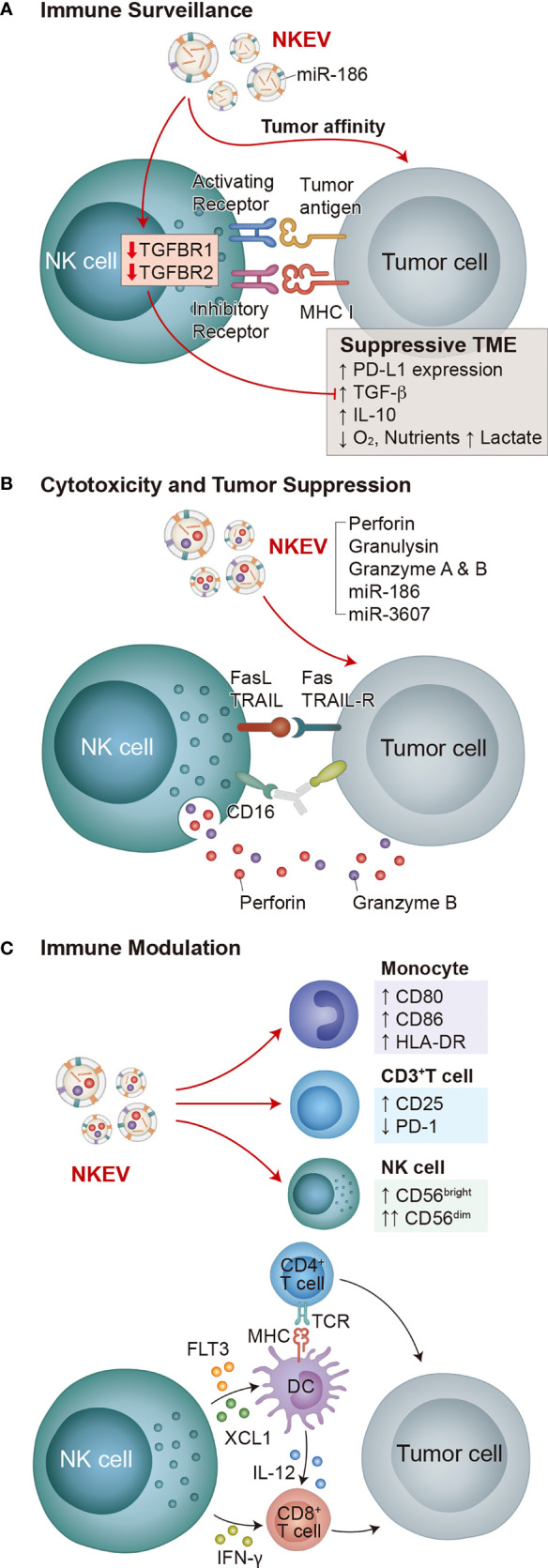Figure 1.

Functions of NK cells and NKEVs. The key functions of NK cells are immune surveillance, cytotoxicity and tumor suppression, and immune modulation, all of which involve both NK cells and NKEVs. (A) NK cell immune surveillance depends on the interaction of activating and inhibitory receptors with target cells. In suppressive TMEs, NK cells are inhibited by PD-L1 on tumor cells and tumor cell-secreted TGF-β and IL-10. Decreased oxygen concentration, increased lactate production, and decreased available nutrients also inhibit NK cells. NKEVs exhibit tumor affinity, and NKEV delivery of miR-186 to NK cells decreases TGFBR1/2 expression, fortifying them in suppressive TMEs. (B) Cytotoxicity and tumor suppression by NK cells depends on either CD16 regulated ADCC or degranulation of vesicles containing perforin and granzyme B in response to the combined activation of activating receptors. NKEVs directly deliver cytotoxic effector cargo of perforin, granulysin, granzyme A and B, as well as miRNAs miR-186 and miR-3607 to tumor cells. (C) NK cells produce immunomodulatory cytokines and chemokines in response to activation, directly activating CD8+ T cells, and stimulating dendritic cells to activate both CD8+ and CD4+ T cells, which subsequently attack tumors. Meanwhile, NKEVs increase CD80, CD86 and HLA-DR expression on monocytes, increase CD25 expression and decrease PD-1 expression on CD3+ T cells, and increase the total NK cell population and the CD56dim NK cell fraction.
